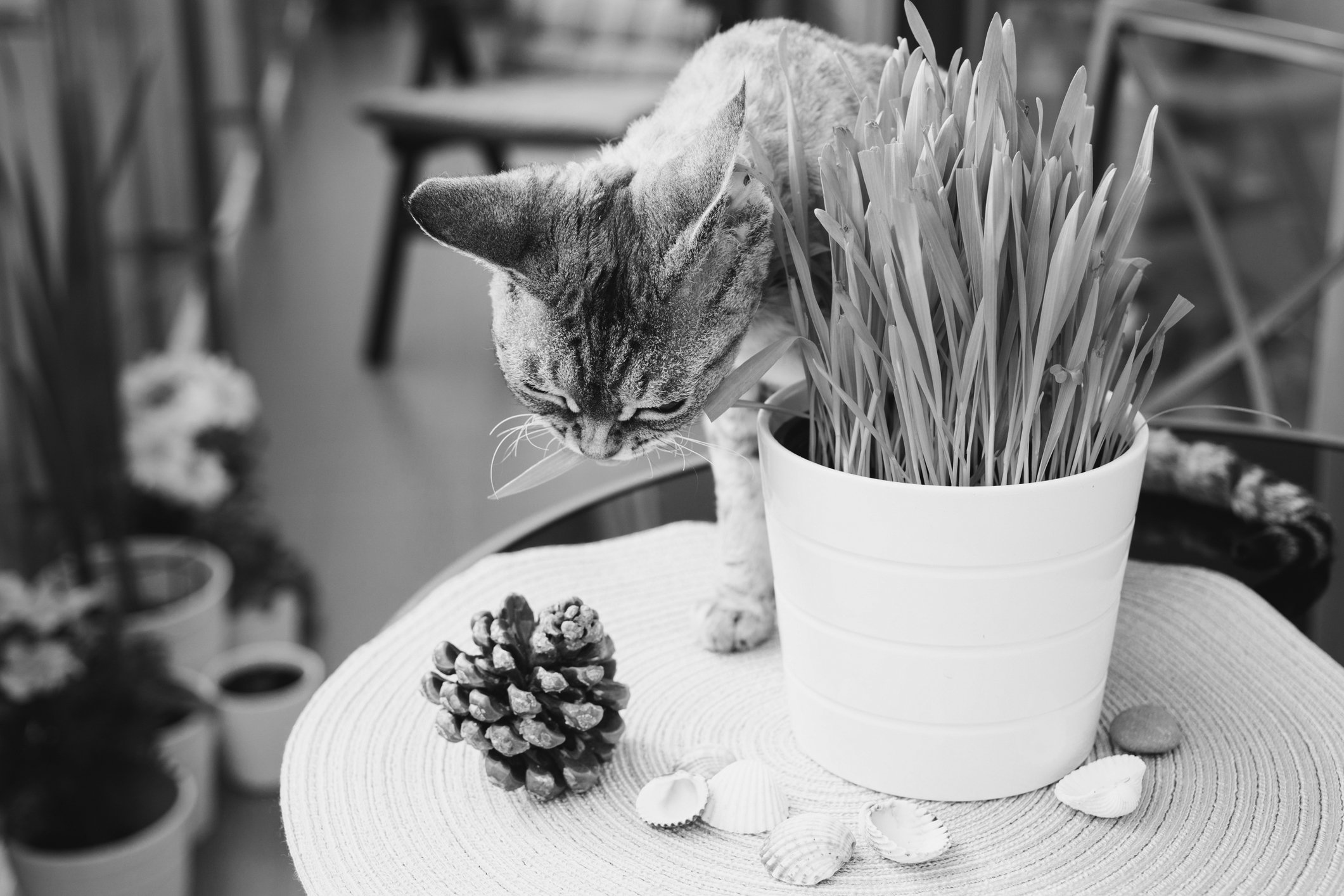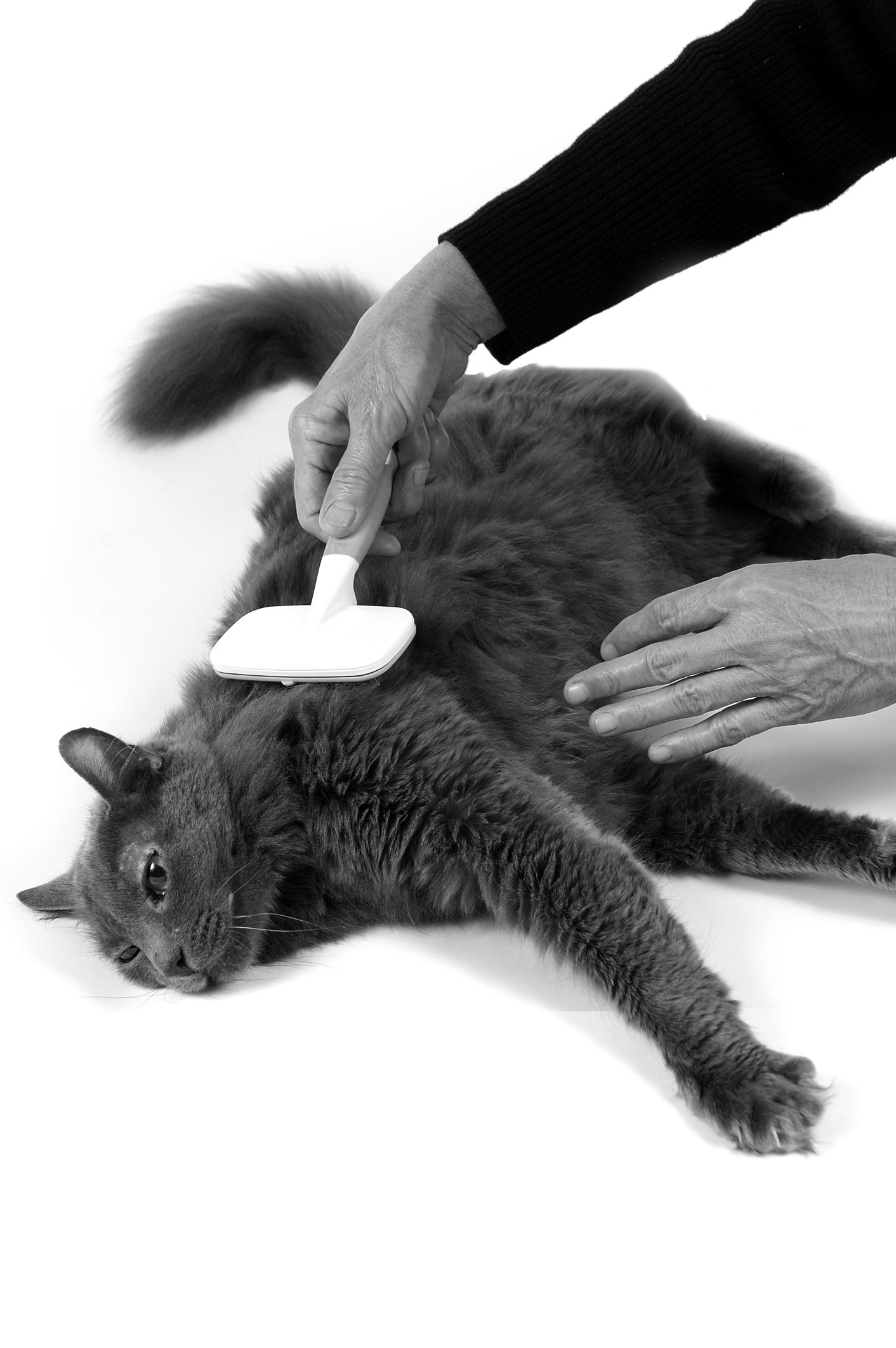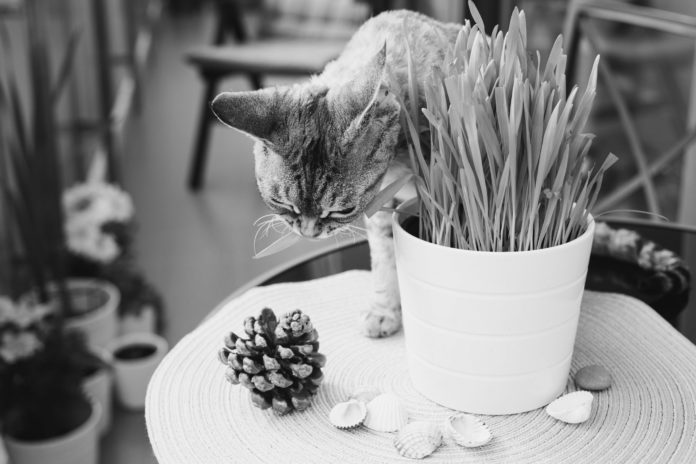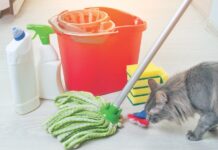Every cat lover can tell you tales of waking from a deep sleep to the sound of their cat retching up a hairball or stepping on a hairball as they get up in the morning. Not pleasant experiences!
Hairballs, also known as trichobezoars, are a fact of life for most cat fanciers. This is especially true if you have a long-haired cat, such as a Persian or domestic long-hair, but even domestic short hairs can suffer from hairballs. Luckily most hairballs are a minor problem.
Cats are prone to hairballs for two reasons. First, their tongues are rough with papillae that slant backwards. Second, cats are known for their fastidious grooming. As your cat grooms, any loose hairs are caught up by that rough tongue and sent on down the esophagus into the stomach.
Hair is not very digestible, so the hair collected there either passes out in the feces or builds up into a size that irritates your cat’s stomach and is then vomited up. The characteristic sausage shape comes from the passage out via the esophagus as the hair gets compressed. You may even mistake a hairball for feces at first and think that your cat has a litterbox problem. A close inspection will show the difference.

Most of the time, the amount of hair swallowed during your cat’s daily grooming is small and the hairs simply pass on through the digestive tract. There are situations, however, in which a large amount of hair may get swallowed at one time. These times include periods of heavy shedding, after a bath, or if something has been spilled on her coat. Stressed cats and cats with skin problems may do extra grooming and build up hair accumulations as well.
An Ounce of Prevention. As always, prevention is better than having to treat this problem. You can help minimize the amount of hair your cat consumes by regular grooming. Use a brush like a slicker brush (with short metal prongs) that mimics your cat’s tongue. Be sure to brush your cat all over, including areas behind her ears and in her armpits where mats often form. You may need to snip those mats out very carefully with scissors. Be very careful with the shears. It’s extremely easy to grab your cat’s skin when you’re cutting. Brush all the way down the sides — not just the back. Lift the hair to be sure you get the undercoat and don’t just skim over the top. Do the stomach area too. Be sure to do a thorough grooming to remove all loose hair both before and after a bath.

If your cat resists grooming or has built-up matted areas you may need to have her shaved. Some groomers will do this, or you can do it yourself if you have clippers, but if your cat resists violently the best solution may be to have her tranquilized and shaved at your veterinary clinic.
There are special diets that can help with cats who have chronic and recurrent hairball problems. These diets contain added indigestible fiber to help push the hair through the gastrointestinal tract. You can provide some natural fiber by giving your cat access to grass to chew on. You can purchase or make special planter setups for indoor “cat grass.” Most cats enjoy those.
Make sure your cat has lots of fresh water available at all times. Plenty of fluid can help move hair along.
Supplements. There are special hairball supplements that include a lubricant to act as a mild laxative. These contain oils to help everything move along as well as some vitamins that may be lost due to the action of the laxative. Hairball supplements come in the form of a toothpaste-type tube and have a similar consistency. Generally there are various flavors so you can find one your cat likes. Avoid some of the “home remedies” that often include oil products and don’t replace the vitamins that are lost by their use.
Rarely, a cat will develop a blockage from hair accumulations. This can happen in the stomach with a large amount of hair consumed at one time but more commonly a thick wad of hair will get stuck in the intestines. If you notice your cat trying to vomit but nothing is coming up and she’s losing her appetite and acting depressed, you need to contact your veterinarian.
A full physical examination, history, and radiographs (X-rays) generally tell the story, although a contrast study may be required to verify the blockage and locate where it is along the intestinal tract. Sometimes just extra laxatives and fluids at the veterinary clinic will break down and move the wad of hair along. In a worst-case scenario, your cat will require surgery to remove the obstruction. Clearly, prevention is much better than having to treat a hairball obstruction!
Hairballs aren’t fun, but with some effort on your part you can prevent most of them. Make grooming a regular part of your cat’s care. You will both come to enjoy the time spent together. That extra care is a small price to pay for feline companionship.




